Chicken Coop Cleaning The Deep Litter Method
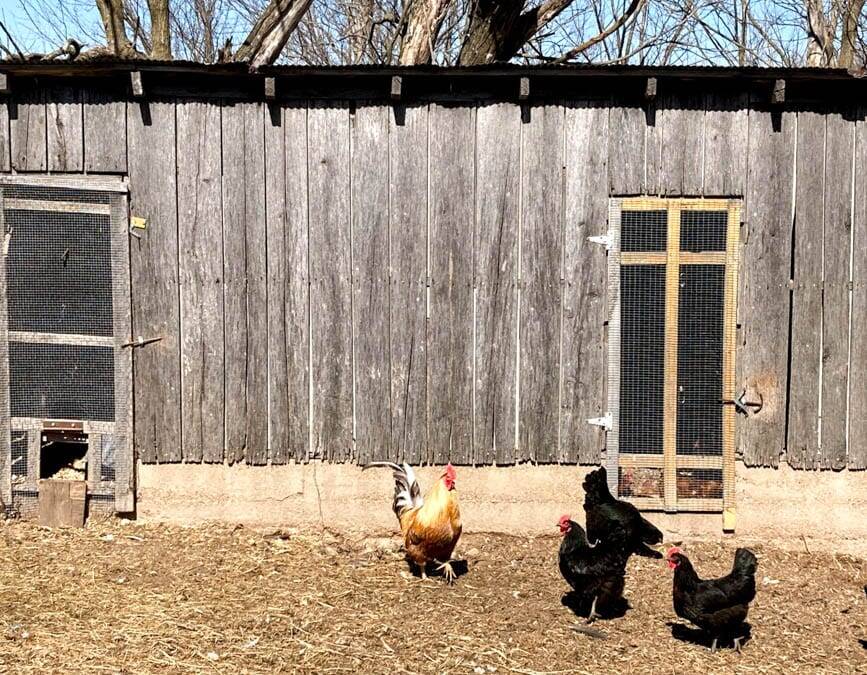
Using the deep litter method in your chicken coop saves time and effort, plus it produces excellent compost for your garden.
Chicken house maintenance is one of those things that most chicken keepers don’t really enjoy. Chicken poop is really smelly. It’s arguably one of the nastiest smelling substances on earth. Put 50 chickens and all of their overnight droppings in one house and you have got a stinky situation!
What if I told you there was a way to keep the odor down in your chicken house without cleaning it out every couple of weeks or months? Pretting intriguing right? Let me tell you about the Deep Litter System!
What is the Deep Litter System?
It is a low maintenance, highly efficient way to manage chicken house waste. Essentially it is a way to make nitrogen-rich compost with very little effort. You layer pine shavings or some other high carbon bedding material on the floor of the coop. This along with the nitrogen-rich chicken droppings decompose over time to produce compost. You add in bedding material when needed and don’t worry about cleaning the coop out regularly. It only requires a major clean-out every year or so.
We use this method for our laying hens only. To learn more about how we raise meat chickens on pasture, read this post.
What are the Benefits of the Deep Litter Method?
- My favorite benefit is that you don’t have to regularly clean out the chicken house.
- The chickens naturally scratch and aerate the coop
- Adding in more pine shavings is easy and it makes the coop smell fresh
- It keeps down chicken house smells
- When you clean the coop every year or so you get wonderful compost
- Composting generates heat which helps keep the coop warm through the winter
- The microbes in the composting bedding actually help prevent parasites and illness
What is the Best Bedding for Deep Litter Coops?
We have tried several different types of bedding over the years. Chickens don’t really urinate. When you look at their droppings, the white part is actually their “urine”. Liquid waste goes from their kidneys where most of the actual liquid is concentrated then on to their cloaca and then to the large intestine. (You are welcome homeschooling parents!). All that to say, chicken houses don’t usually get very wet, if they do it is usually from rain getting in or from a leaky or spilled waterer. Not from urine.
Straw
We have gone the cheap route using leftover straw, hay or grass. While inexpensive it just isn’t as effective. The moisture tends to stay too high and it just doesn’t break down as nicely. It can produce a slimy, wet, smelly coop. Mixing some straw in works fine, it just shouldn’t be the primary bedding material. Plus, straw packs down and makes it more difficult to scoop out.
saw dust
If you are a woodworker, this might be a readily available bedding. However, as the name implies saw dust is dusty! It tends to get into the air and settle on everything in the coop making it less than ideal. However, it is absorbent.
Leaves
Dry leaves can make a good free bedding, however, they do break down very quickly and turn rather dusty. If this is all you have available, it can work. Keep in mind that you will need to add leaves more often. This can be a problem through seasons other than fall.
Pine Shavings
This is by far the best bedding for the deep litter method. Pine shaving smell so nice when you spread them out. The chicken house is instantly freshened. The pine shavings break down evenly and produce a lovely compost. Adding pine shavings every few months keeps the nitrogen carbon ratio balanced and keeps the chicken coop smelling fresh.
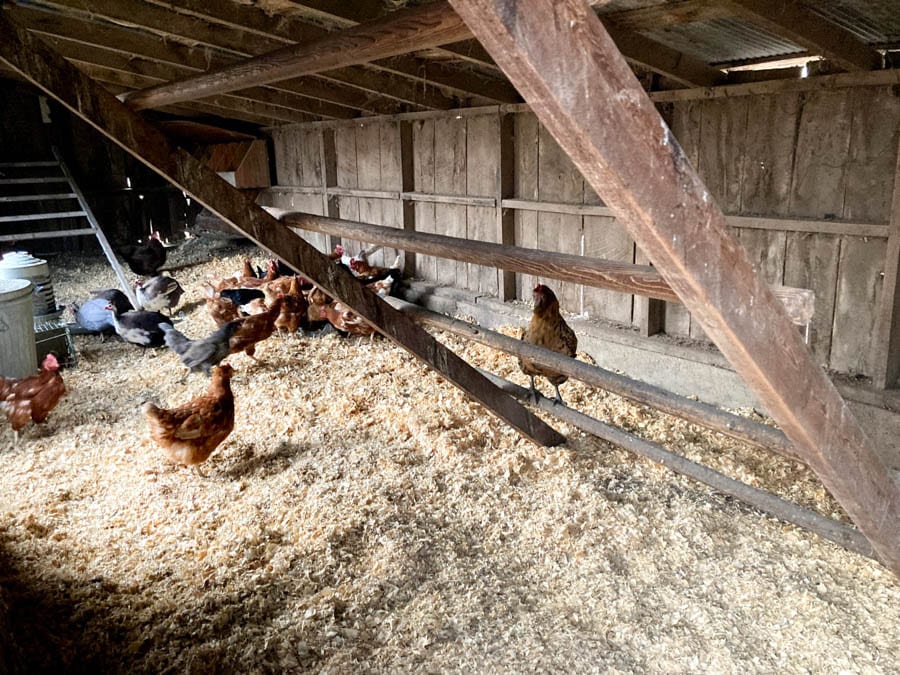
What Kind of Coop is Best for the Deep Litter Method?
Our coop is rather large and it works well. However the deep litter method could work in a small coop as well.
There are three main things to consider for your coop. The first one is ventilation. Any chicken house should have good ventilation. This is so that ammonia and dust can escape. Plus it makes the house more pleasant in the summer.
The second thing to consider is the type of flooring. An even or level floor makes it much easier to scoop out the coop. Dirt or concrete are ideal for the deep litter method. A wooden floor will work as well, however, you will want to pay attention to whether or not the wood is rotting or breaking down beneath the bedding.
The third thing to consider is the height of the ceiling and the ability to work in the chicken house. We have some slanting to the roof in ours, but the side closest to the door still allows us to get in there with a shovel.
How do you do the Deep Litter Method?
To start you need about 4 inches of fresh bedding. Our favorite is pine shavings. Spread this over the entire coop floor. Pine Shavings are about $6 a bag. Depending on the size of the coop, you may need several bags to start.
Next just let time and the chickens do the rest. Depending on the size of the flock, they will likely do the aeration for you. If you notice any concentrated areas, particularly under the roost, rake it around and add fresh bedding.
If you have a small flock and they don’t seem to be scratching it around enough, sprinkle some feed on the floor. This will encourage them to scratch it up.
Check in periodically to make sure it looks and smells fresh. Every few months add a light layer of bedding. Again, under the roost will likely need some attention. Chickens do a majority of their pooping at night, so that area usually has the highest concentration.
Also, our chickens are let out to free range (poop all over our porch) during the day. If your chickens were confined to the coop, this would take a little more management.
Want Cute Labels for your Homegrown Eggs?
When to Clean out the Chicken House?
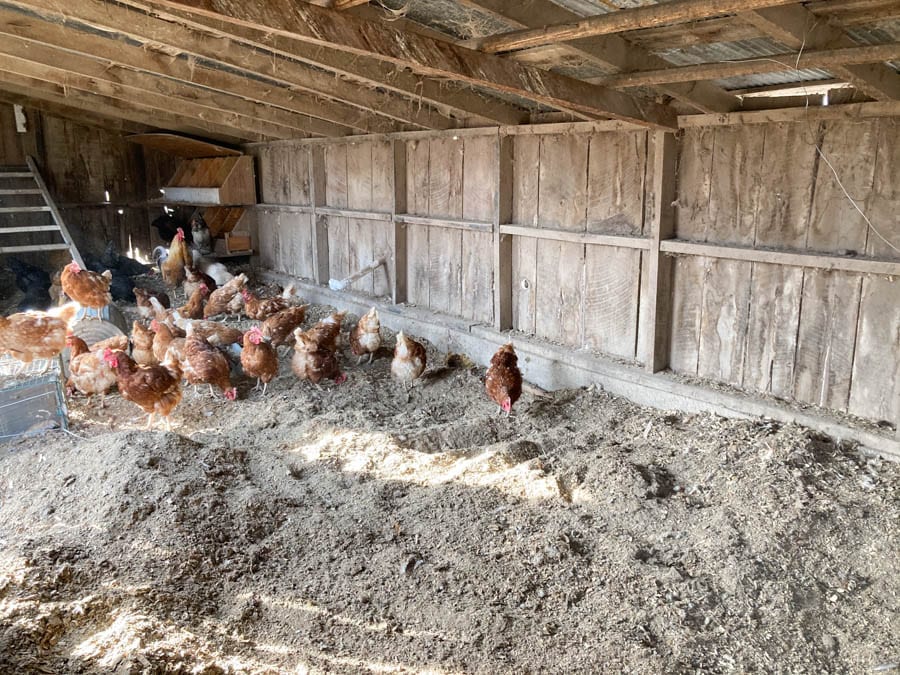
We Let it go for a year. We have gone as long as two years. When it reaches about 12″ in depth, you can scoop out all of the composted bedding. Leave a few inches on the floor then add a fresh layer.
We now have a tractor to help with cleaning out our coop. Ours is fairly large. However, we used wheelbarrows and manpower for many years! It may take a couple of hours, but it’s only once a year!
That’s it!
The picture below is during the clean-out. We use the concrete part of the wall as a line for how full it can be before we need to clean it out. There was some straw in here this time, and you can see it doesn’t break down very well.
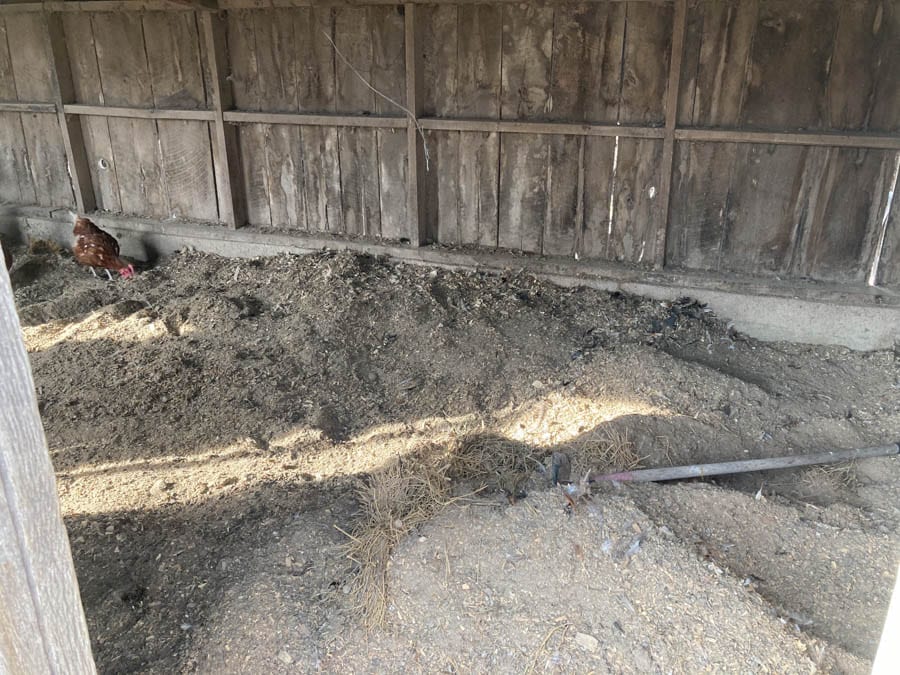
What to do with the Used Bedding?
We usually put our composted bedding directly in the garden. We do this in the very early spring. This gives it a bit more time to break down before we plant our garden. If it looks like it isn’t fully composted, then add it to your compost pile and let it break down a bit more.
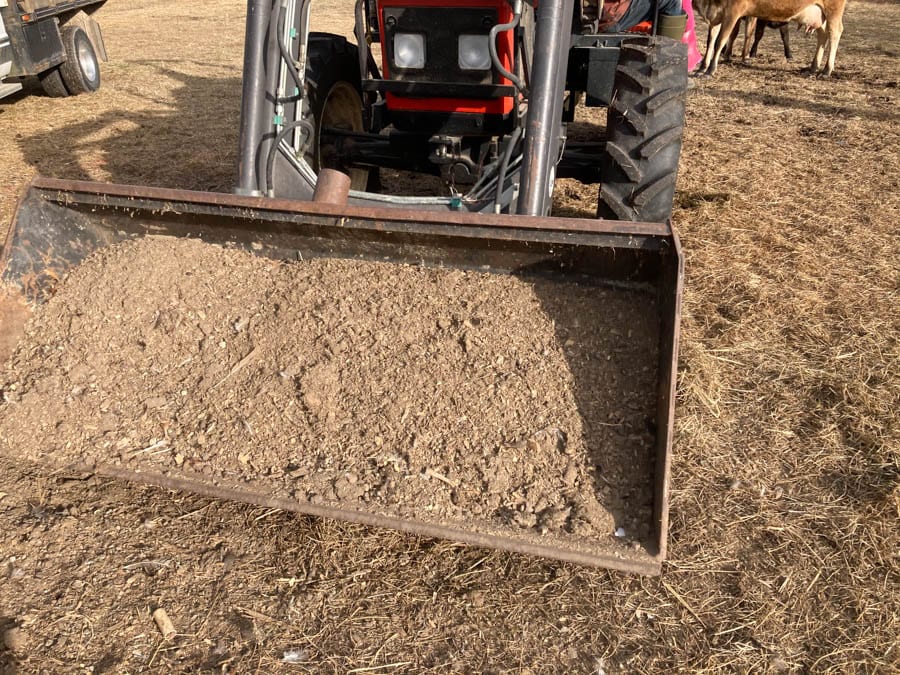
My husband also likes to spread it all over our fields. This makes a great fertilizer for hayfields.
A Quick Video of the Chicken Coop Being Scooped Out
Need Help Organizing Your Homestead? Check Out Our Homestead Planner!
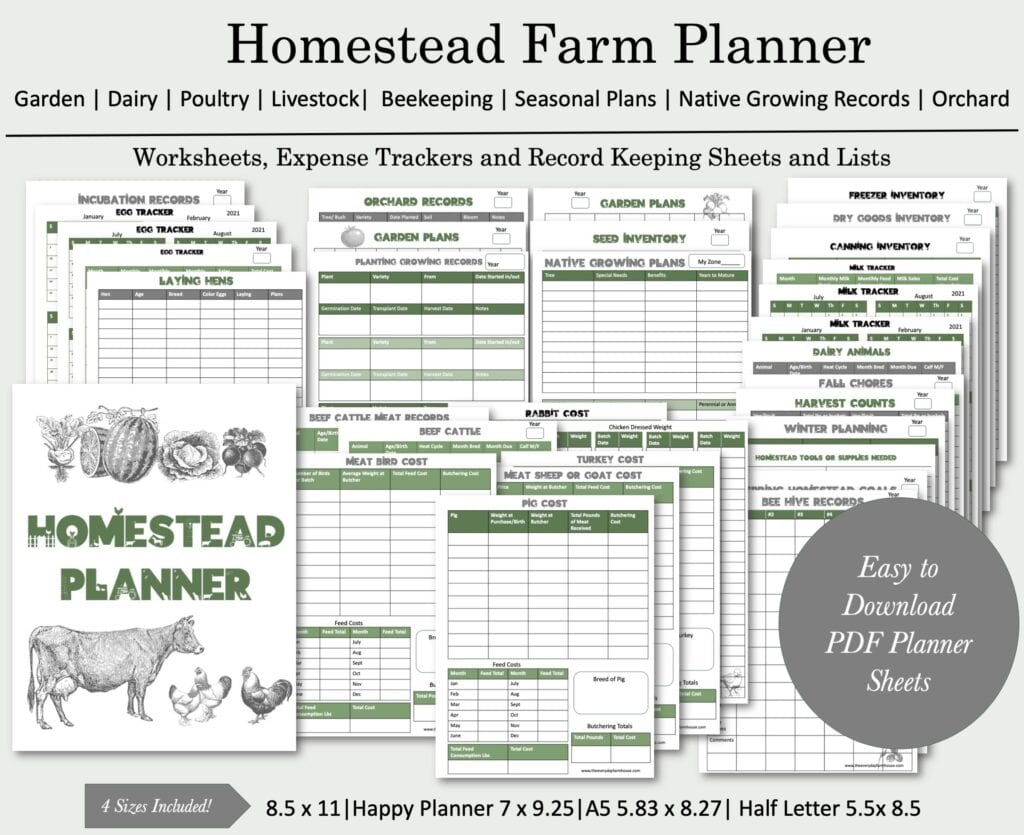
Pin and Share!
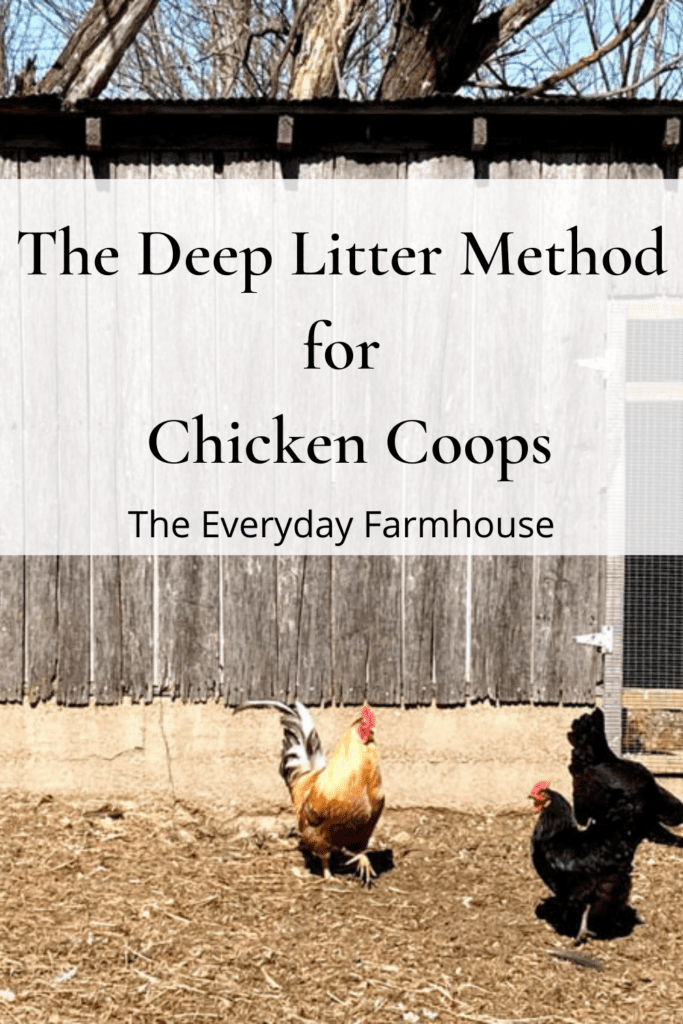
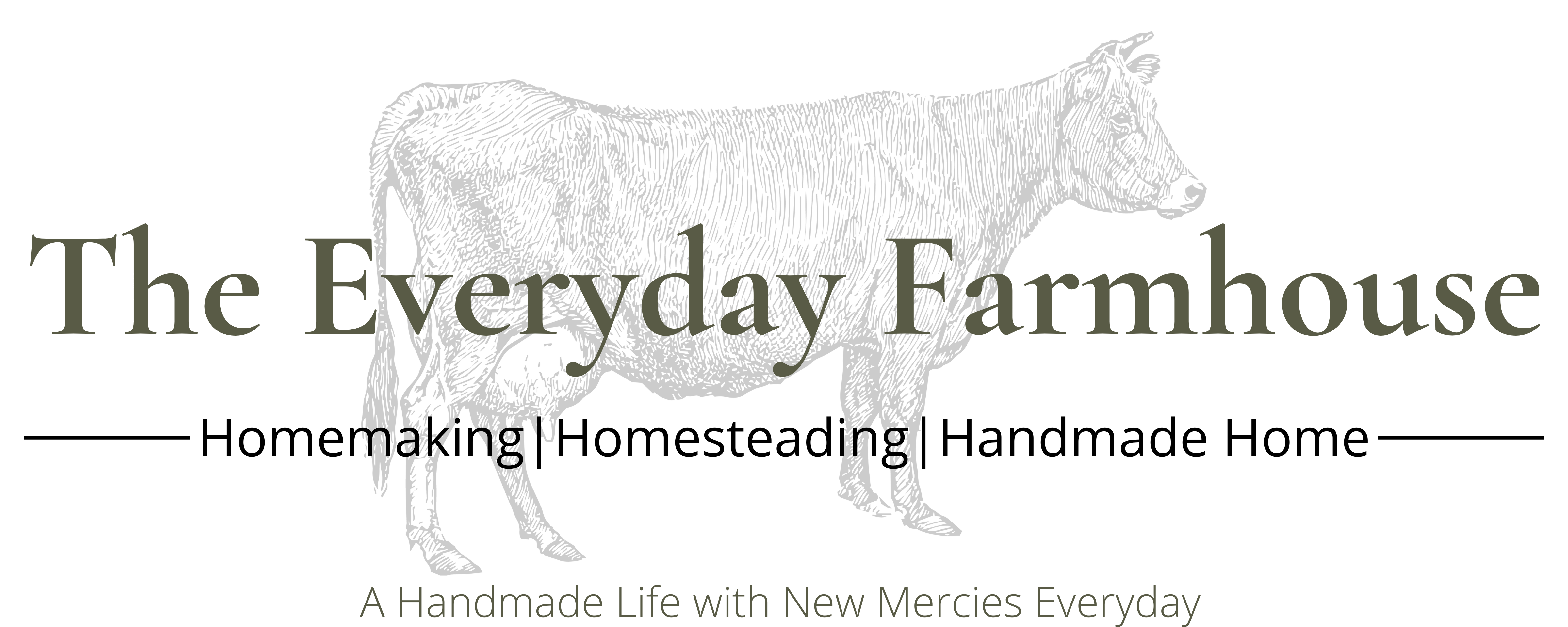
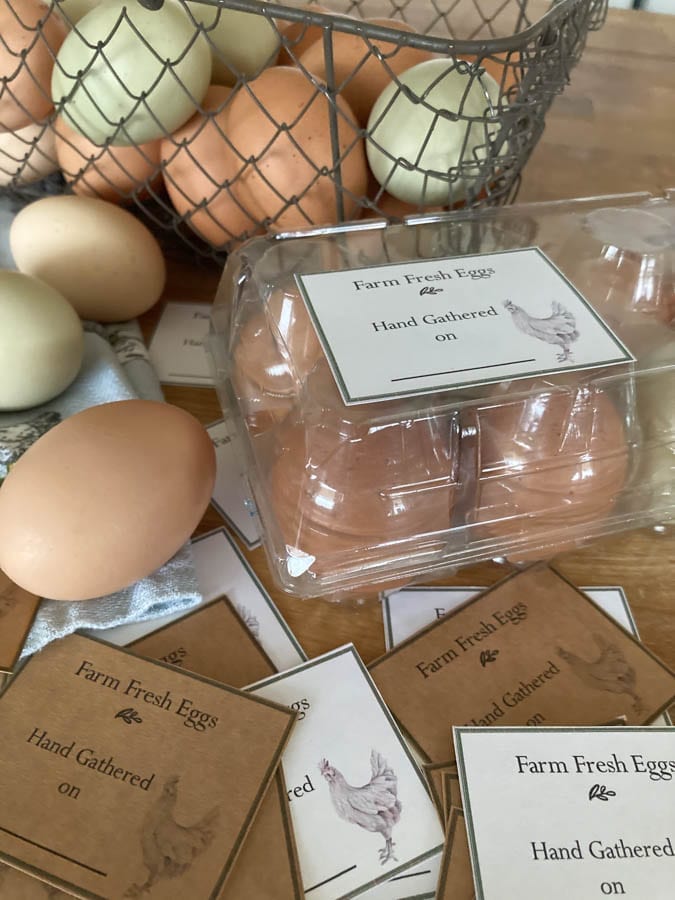
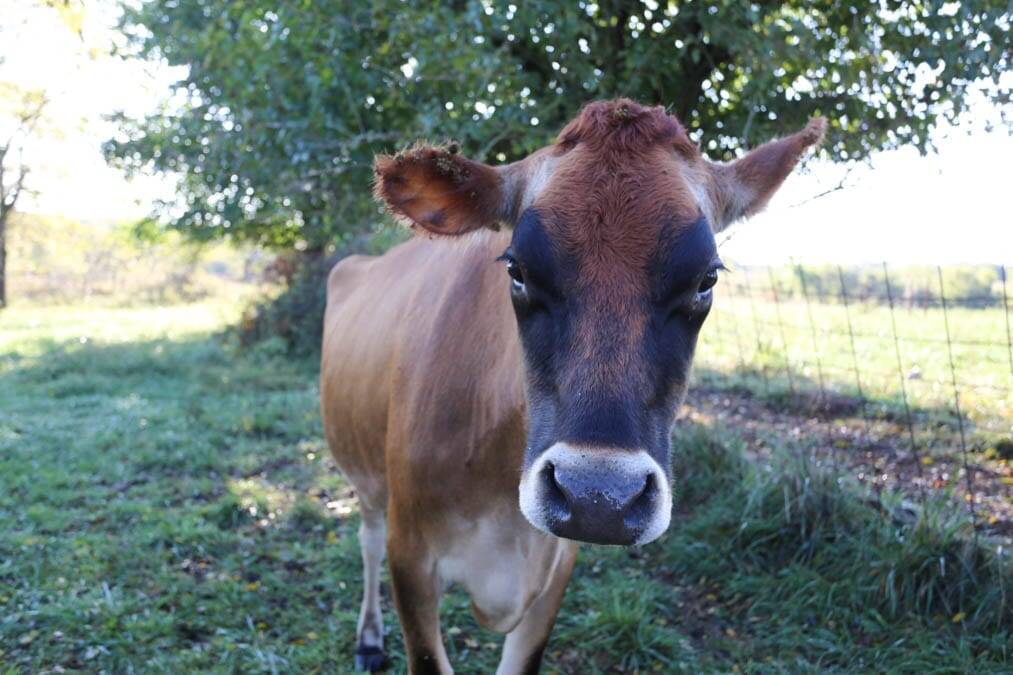
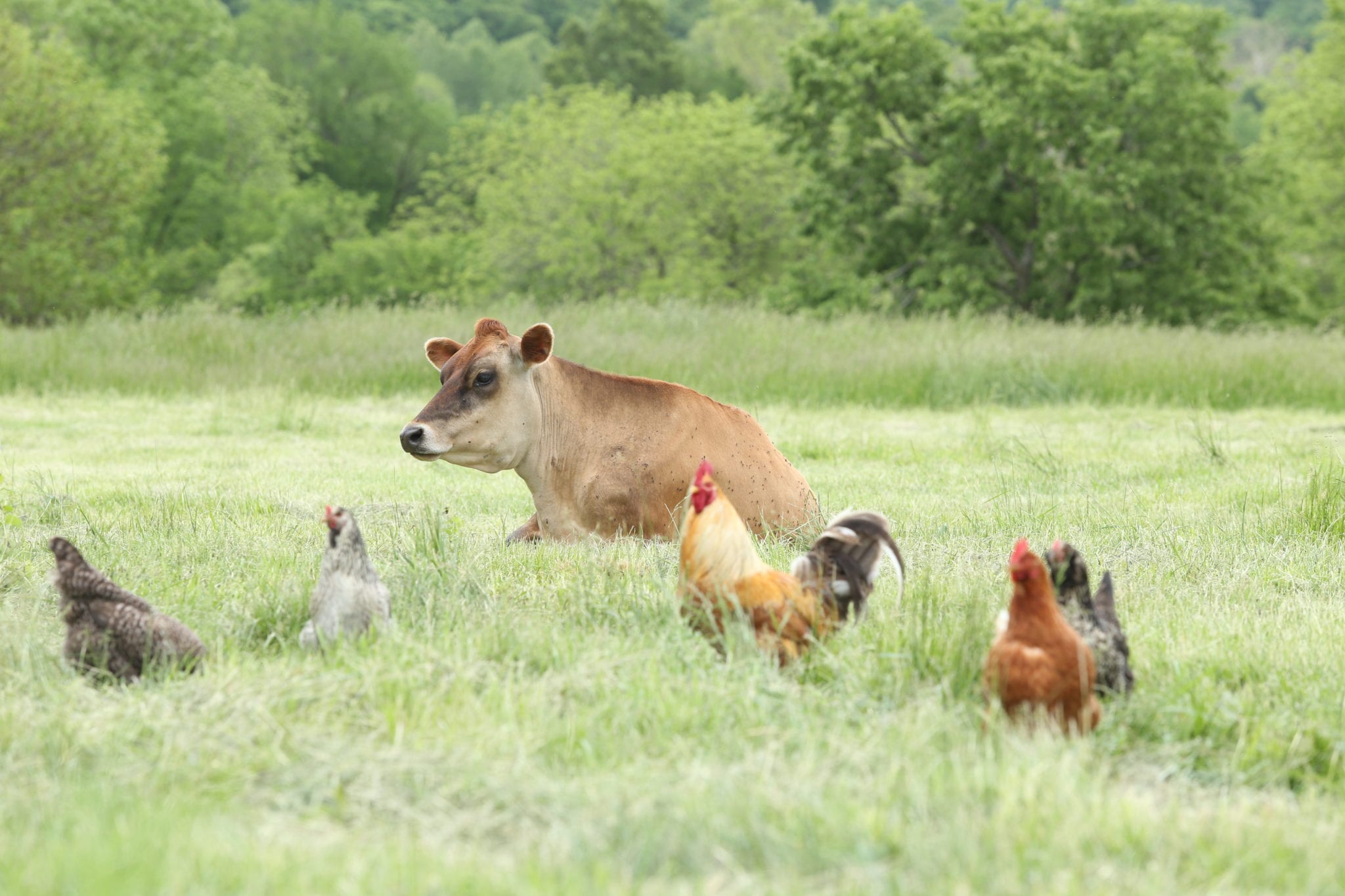

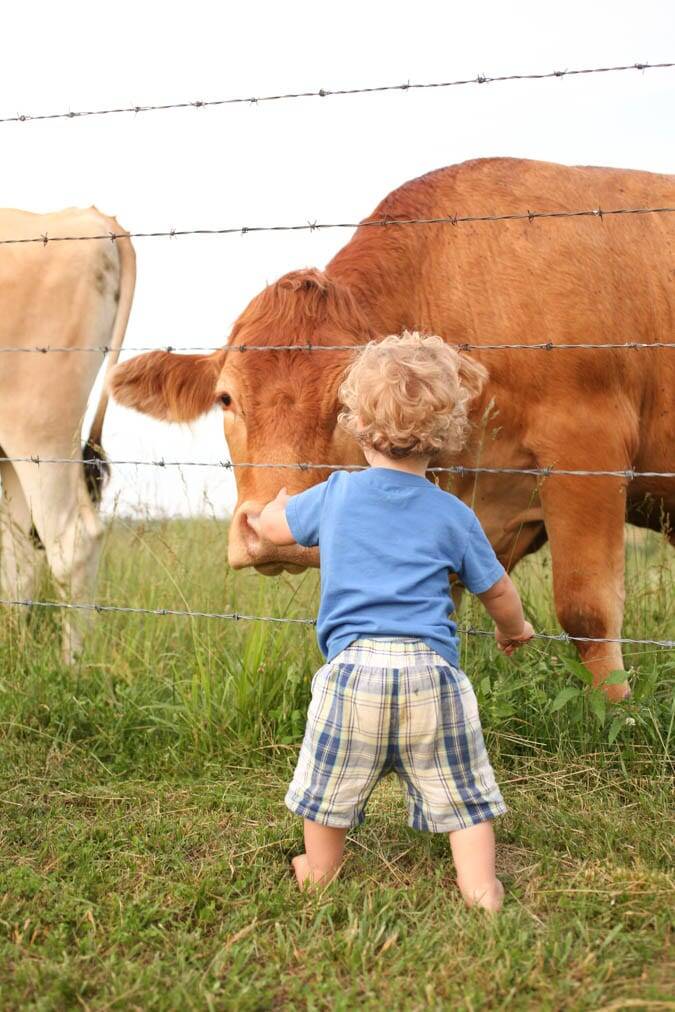
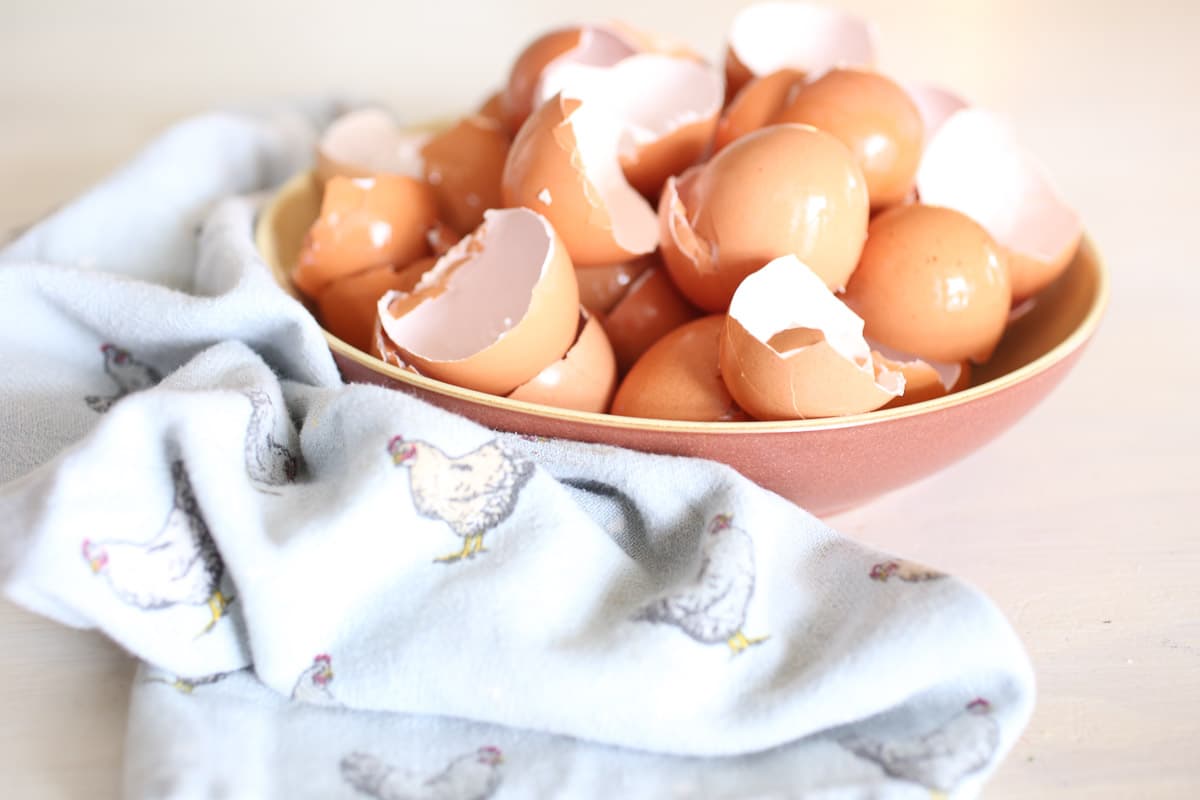
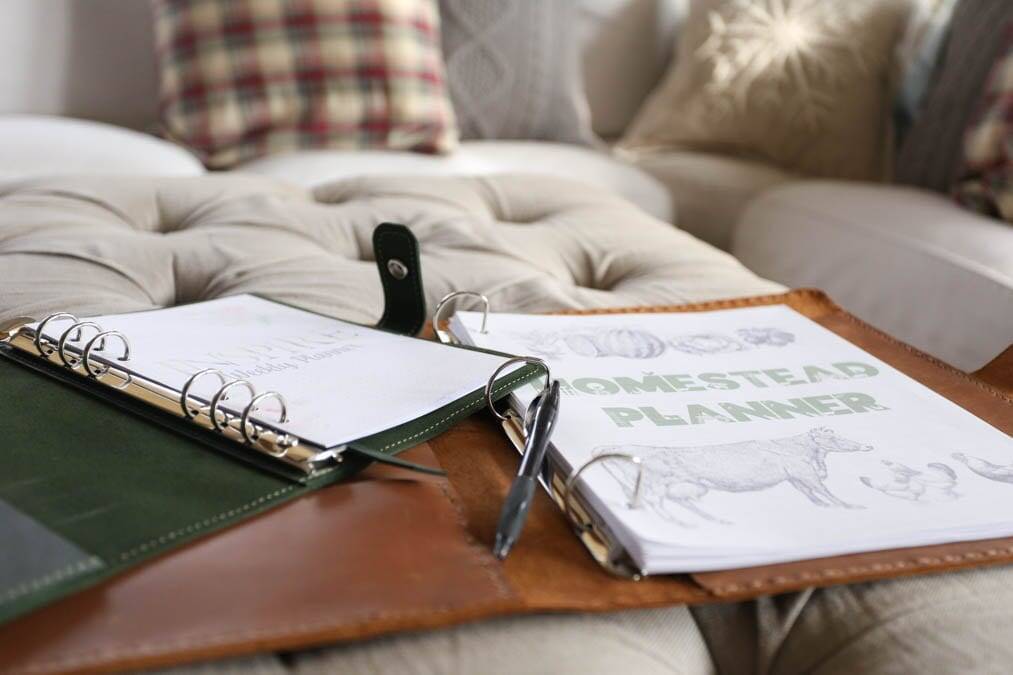
Jennifer, I am always amazed at the amount of info you have stored in that pretty head! You are really a farm girl(lady) now. I wish you lived closer so I could enjoy your fresh eggs!
You are sweet! I will give you some the next time I see you!
Just a quick question. What about surfaces in the coop? We have a lot of surfaces (things that are off the ground) that just get covered in poop. Do you leave that for a year too? Or do you clean the surfaces but just not the stuff on the ground?
Good question. I honestly don’t know without seeing your exact situation. Admittedly our house does not have lots of surfaces. Places where poop does accumulate like the nesting box ledge, we just use a stick or whatever is handy to kind of sweep it off onto the ground where it can be mixed with the bedding to decompose. We do not regularly clean the ledges and such, we just sweep them off when we notice them getting full. We have a friend with a less than ideal chicken house, with lots of surfaces and way too many roosts, they end up cleaning theirs all the time. If that were me I think I would look into a different coop. Nobody has time for all that chicken poop cleaning! I hope that helps!
thanks for sharing this we clean 2 coops weekly.
You are welcome! I hope it helps you out!